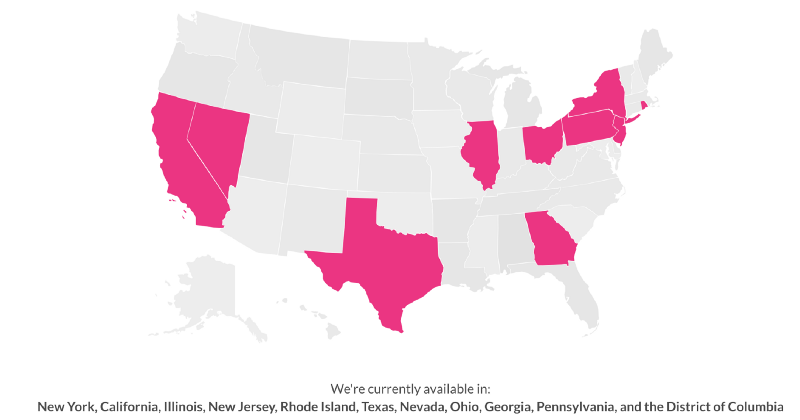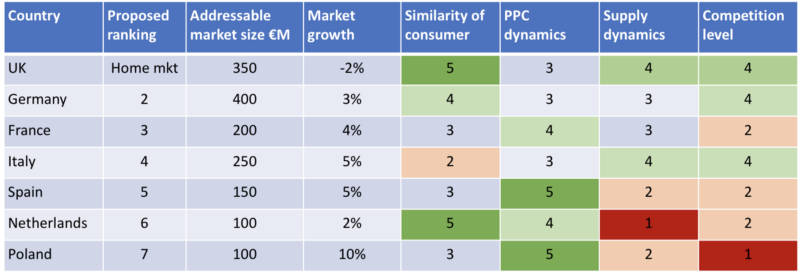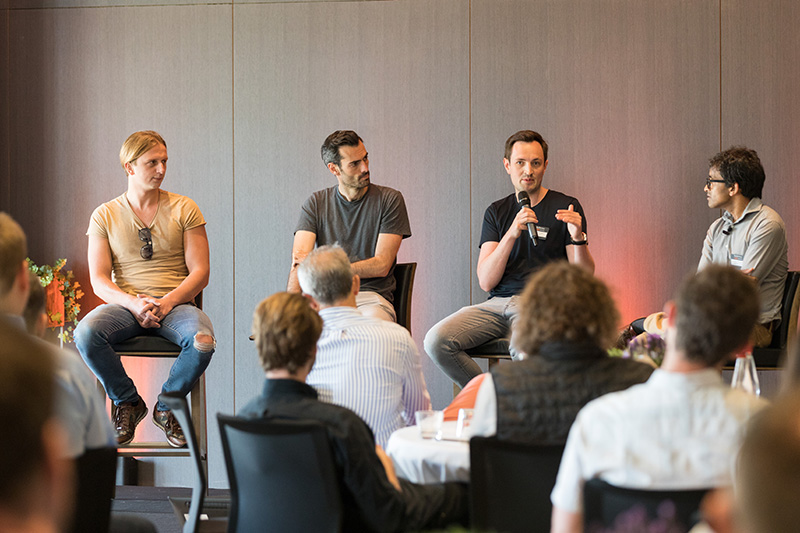Step 2: Market prioritisation
Don’t jump straight into a massive google sheet with every possible statistic on 100 possible countries!
Instead, I suggest you think through what really matters to your specific business, along the following dimensions:
Is the new market big enough to really matter?
Usually, this means it is at least as big as your home market, preferably bigger. I have a strong point of view here, that ‘infilling’ small supposedly easy markets is not worth spending management time on. By all means, let your existing German team make opportunistic sales to clients in Vienna, but don’t call this international growth. ‘Big’ here means your directly addressable market, proxies such as population, GDP or number of small businesses are a distraction.
What else are you proving if you win in this market?
For software companies, proving you can win in the highly competitive US market is an important step to building a great company, and towards an IPO or other liquidity events.
Are there synergies across markets?
For example, if you are in eCommerce you can establish distribution hubs that cover much of Europe, and many suppliers will work with you across the continent. This also applies to sectors such as logistics and advertising.
Is there dramatic growth or shrinkage of the market?
Single digit % market growth or shrinkage is irrelevant for a startup. However, if the market is falling off a cliff or expanding very fast that should be taken into account.
How well will your product work in this market?
Speak to a few locals from this country and see how they react. See how analogous businesses compare between countries. If you can keep a consistent product across countries your life will be 10x easier.
Can you beat the competition?
Who are the local competitors or likely entrants? What advantages do you have, and what advantages do they have? Focus on the local startups as well as the incumbents. Think through partnerships and channels. Local competitors are easy to underestimate, but if network effects or brand are strong the fact that they have a crappy website doesn’t automatically mean you can beat them.
Will the economics work?
Run a simple test on Adwords or Facebook to see how marketing costs will compare. Make a best guess on pricing and see what this implies for unit economics.
Do you have a route to market?
Are there channels in this market which control market access and might make life difficult? See for example how UK financial comparison sites have struggled to sign up the strong insurers and displace offline brokers in continental Europe.
Do you have enough funding to make meaningful progress?
(Or are you confident of your ability to raise this money). The classic mistake here is taking a business to the US too early, without enough funding to do it properly.
Are there strong ‘winner takes all’ network effects that justify a land-grab?
Be careful here, strong network effects are rare and expanding too fast just to try to close off new markets to competitors can easily kill promising companies (e.g. Gilt, Livingsocial, Hailo).
Do you have an existing partner or key customer who can help you get started?
For Enterprise software companies the first clients to win in a market are often the hardest, and so if you already have them it will increase your chance of success. Again this is something to be careful with, in particular with partners who might lose interest at a crucial stage or stretch your resources too thin.
Time zones and travel.
For a new market to be a success you as a CEO and your management team are going to have to get out there in person and spend a chunk more time on the phone.
Jetlag kills your personal productivity.








 Our first international market was Germany. Our expectation was that we could get going in months, and in retrospect went too wide too early.
Our first international market was Germany. Our expectation was that we could get going in months, and in retrospect went too wide too early. 





